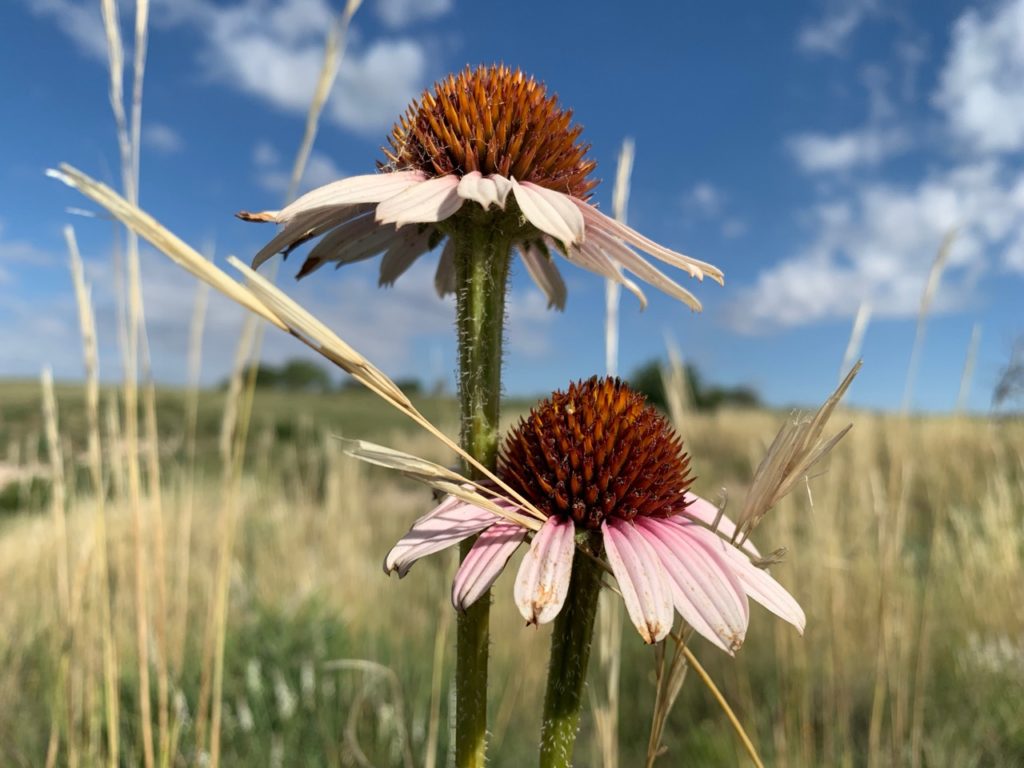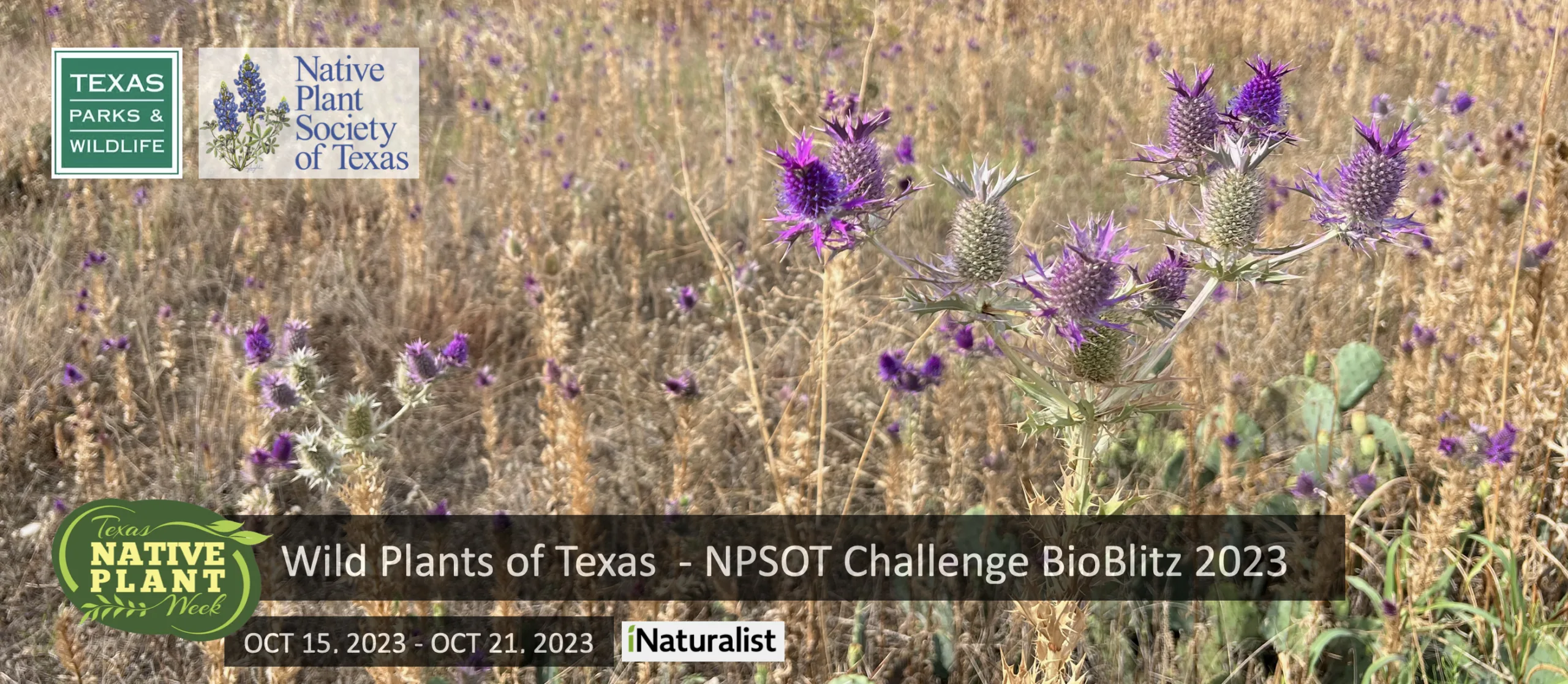
What is Texas Native Plant Week?
To recognize the role of native plants in conservation and to provide incentive for schools to teach children about the importance of native plants, in 2009 the Texas Legislature designated the third week in October as Texas Native Plant Week.
Many organizations and communities recognize Texas Native Plant Week with festive events, native plant sales, educational opportunities and outside activities. Look for events to attend in your community, or celebrate by just getting outside and enjoying our wonderful Texas native plants.
Wild Plants of Texas NPSOT Challenge BioBlitz

Join NPSOT members and the public in the fifth annual NPSOT plant BioBlitz! The Native Plant Society of Texas is leading a BioBlitz challenge for anyone to document the wild plants (plants that aren’t cultivated or planted) anywhere within the state.
Observations need to be made from October 15 through October 21, and they need to have photo evidence so they can be verified by others. Ideally, we want to see more native plants documented, but all plants count! You do not need to join the iNaturalist BioBlitz to participate. For more information and instructions see our post about the 2023 Wild Plants of Texas BioBlitz.
Learn more and join the iNaturalist Wild Plants of Texas – NPSOT Challenge BioBlitz.
A Pollinator BioBlitz is also taking place from October 6-22, 2023 for participants to observe and identify pollinators and nectar-producing plants, take photos, and share with friends! Learn more and join the iNaturalist 2023 Pollinator BioBlitz. For more information about the Pollinator BioBlitz go to the Texas Parks and Wildlife Department ‘s Pollinator BioBlitz page.
Social Media Toolkit for Chapters
The Texas Native Plant Week statewide social media campaign toolkit was initially developed by the 2022 Hill Country Chapter community outreach board member. It contains related content for each of the themed days that chapter leaders can use to customize their online campaigns.
Native Plant Resources
About Native Landscape Certification Program
About this Program Richard Louv in Last Child in the Woods points out that baby boomers are the last generation of Americans to share an intimate, familial attachment to the land and
Monarch & Milkweed Resources
Learn about Monarchs Learn about the Monarch Butterfly Learn about Milkweed Texas Parks and Wildlife Identification of Milkweeds (Illustrated Guide) Learn about Butterfly Gardens Wildflower Center guide to making
Monarch Waystation Requirements
Monarch Waystations are places that provide all the resources necessary for monarchs to produce successive generations and sustain their migration. A Monarch Waystation needs milkweeds, nectar plants, and some kind of
What is a native plant?
By Bill Ward Botanists say that Texas is home to over 7,000 species of vascular plants, including native, naturalized, non-native, crop and forage, and introduced perennial ornamental species. Nearly 5,000
